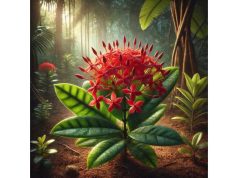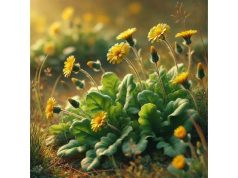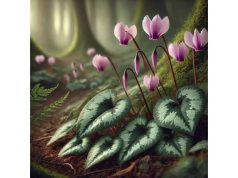
Indian Cassia is a time-honored herb celebrated in traditional Indian medicine for its wide range of therapeutic properties. Known for its remarkable healing attributes, this botanical treasure supports overall wellness by promoting balanced blood sugar levels, aiding digestion, and soothing inflammation. Its distinctive yellow blooms and vibrant foliage not only enhance gardens but also serve as a natural remedy in numerous home treatments. As modern research unveils more about its potent active compounds, Indian Cassia is gaining renewed attention as a versatile natural solution. Read on to explore its rich botanical history, in-depth phytochemical profile, diverse health benefits, and practical applications in everyday life.
Table of Contents
- Botanical Overview and Identification
- Phytochemical Profile and Key Constituents
- Health Advantages and Core Attributes
- Practical Applications and Safety Considerations
- Research Insights and Major Study Findings
- FAQ
Botanical Overview and Identification
Indian Cassia, botanically known as Cassia auriculata, belongs to the legume family Fabaceae and has been an integral part of traditional Indian healing systems for centuries. This deciduous shrub or small tree is characterized by its bright, eye-catching yellow flowers and finely divided, pinnate leaves that contribute to its ornamental appeal. Indigenous to the tropical and subtropical regions of India, it thrives in well-drained soils and under full sunlight. Historically, local communities have cultivated this plant not only for its aesthetic value but also for its significant medicinal properties. Its robust adaptability enables it to flourish in a variety of climatic conditions, making it a dependable component of diverse ecosystems.
The morphology of Indian Cassia is particularly notable. Typically reaching heights between 3 to 8 meters, it possesses a moderately spreading canopy with slender, arching branches. The leaves are compound, with several small leaflets arranged in an alternating pattern, contributing to an airy, delicate appearance. The inflorescences are arranged in clusters, and each flower exhibits a trumpet-like structure that opens into a vibrant display during the blooming season. Following the flowering stage, the plant produces elongated, slender seed pods that eventually split open to release small, oval seeds.
In terms of taxonomy, Indian Cassia is categorized under the genus Cassia, and its classification reflects both its botanical similarities to other medicinal herbs and its unique adaptations to the local environment. Detailed botanical studies have revealed that the plant’s cellular structure includes an abundance of bioactive compounds, stored primarily in the leaves, bark, and flowers, which are responsible for its therapeutic efficacy. Furthermore, the plant’s resilience in dry, arid conditions highlights its potential for sustainable cultivation in areas with challenging agricultural climates.
Beyond its medicinal uses, Indian Cassia holds cultural and economic significance. In several regions of India, it is integrated into local folklore and is sometimes planted near homes as a symbol of health and prosperity. Its easy cultivation and minimal maintenance requirements have further popularized its use in both traditional gardens and modern landscapes. With evolving research in pharmacognosy, the plant is also recognized as a valuable candidate for developing natural remedies. The blend of traditional wisdom and modern science underscores the continuing relevance of Indian Cassia in contemporary herbal medicine.
Cultivation practices have evolved over time, with modern agronomy techniques emphasizing organic growth and sustainable harvesting. Farmers are increasingly incorporating Indian Cassia into intercropping systems due to its low input requirements and natural pest-repellent properties. This convergence of tradition and innovation ensures that Indian Cassia remains a vital resource, bridging ancient practices with modern ecological and medicinal needs.
Phytochemical Profile and Key Constituents
The therapeutic potency of Indian Cassia is largely attributed to its rich phytochemical composition. Over decades of ethnobotanical research, scientists have isolated a spectrum of bioactive compounds that not only define the herb’s medicinal properties but also contribute to its versatility in various applications. Below is a detailed numbered list highlighting the primary constituents found in Indian Cassia along with insights into their roles and benefits:
- Flavonoids: Flavonoids such as quercetin and kaempferol are abundant in Indian Cassia. These compounds are renowned for their powerful antioxidant properties, which help in neutralizing free radicals and reducing oxidative stress. Their anti-inflammatory and anti-allergic effects also contribute to overall cardiovascular health and may play a role in mitigating chronic inflammatory conditions.
- Anthraquinones: Anthraquinones, including chrysophanol and physcion, are naturally occurring pigments that impart a distinct yellow hue to the flowers. These compounds have been studied for their laxative effects and potential antimicrobial properties. They contribute to the detoxification processes in the body and may also support liver function.
- Tannins: Tannins present in Indian Cassia are polyphenolic compounds that exhibit astringent properties. They play a critical role in wound healing and act as natural preservatives. Tannins help in reducing inflammation and are effective in controlling microbial growth, making them valuable in both medicinal and cosmetic formulations.
- Saponins: Saponins are glycosides known for their foaming characteristics and have been associated with cholesterol-lowering effects. In Indian Cassia, saponins contribute to the herb’s anti-inflammatory and immune-boosting properties. They may also enhance the absorption of other beneficial nutrients in the body.
- Phenolic Acids: Phenolic acids, such as gallic acid and ellagic acid, are potent antioxidants that support the body’s defense mechanisms. They are instrumental in combating oxidative stress and inflammation. These compounds also exhibit antimicrobial activities, which can be beneficial in managing infections and promoting skin health.
- Coumarins and Terpenoids: Although present in lower concentrations, coumarins and terpenoids add to the complex phytochemical matrix of Indian Cassia. Coumarins are known for their anticoagulant and anti-inflammatory properties, while terpenoids contribute to the aroma and may provide additional antimicrobial effects. Their synergistic interaction with other compounds enhances the overall efficacy of the herb.
The diverse range of phytochemicals found in Indian Cassia underscores its multifaceted medicinal potential. Each compound works both independently and synergistically, enhancing the herb’s overall therapeutic profile. These constituents are primarily concentrated in the leaves, bark, and flowers, which are the most commonly used parts in traditional remedies. The variability in compound concentration can depend on factors such as the plant’s maturity, geographical location, and cultivation methods.
Modern extraction techniques have allowed researchers to isolate these bioactive molecules efficiently, paving the way for the development of standardized herbal formulations. Additionally, the stability of these compounds during processing makes Indian Cassia a reliable candidate for inclusion in dietary supplements and herbal teas. As scientific inquiry continues, the potential for discovering new applications of these compounds remains vast, promising further integration of Indian Cassia into modern health and wellness regimens.
In summary, the rich phytochemical profile of Indian Cassia is a testament to its enduring reputation in both traditional and contemporary medicine. Its blend of flavonoids, anthraquinones, tannins, saponins, phenolic acids, and other minor constituents work together to support a wide range of health benefits, reinforcing its status as a powerful natural remedy.
Health Advantages and Core Attributes
Indian Cassia has long been revered for its extensive health benefits, which stem from a robust combination of anti-inflammatory, antioxidant, antimicrobial, and metabolic-regulating properties. Traditional practitioners have utilized this herb to manage conditions ranging from diabetes and digestive disorders to skin ailments and inflammatory issues. Modern scientific studies are beginning to corroborate these ancient claims, highlighting its potential in reducing oxidative stress and regulating blood sugar levels. In this section, we explore the multifaceted health advantages of Indian Cassia and examine its core attributes in detail.
Antidiabetic Effects:
One of the most notable benefits of Indian Cassia is its antidiabetic potential. Research indicates that certain compounds in the herb help regulate blood sugar levels by enhancing insulin sensitivity and promoting glucose uptake. This makes Indian Cassia a valuable adjunct in managing type 2 diabetes. By reducing hyperglycemia, the herb may also indirectly prevent complications associated with chronic high blood sugar, such as cardiovascular diseases.
Anti-inflammatory and Analgesic Properties:
The anti-inflammatory properties of Indian Cassia are well documented in traditional medicine. The bioactive compounds help inhibit the production of pro-inflammatory cytokines, thereby reducing inflammation and alleviating pain in conditions such as arthritis and other inflammatory disorders. This natural anti-inflammatory action supports overall joint health and can provide relief for chronic pain sufferers.
Antioxidant Defense:
Rich in antioxidants, Indian Cassia plays a significant role in protecting cells against damage caused by free radicals. Oxidative stress is a major contributor to aging and chronic diseases, and the potent antioxidants in the herb help neutralize these harmful molecules. This contributes to improved skin health, enhanced immune function, and a reduced risk of chronic illnesses.
Digestive Health Support:
Traditionally, Indian Cassia has been used to stimulate digestive functions and relieve gastrointestinal discomfort. Its mild laxative effects, attributed to anthraquinones and tannins, can help regulate bowel movements and promote a healthy digestive tract. Additionally, the herb’s antimicrobial properties may aid in maintaining a balanced gut flora, which is essential for optimal digestion and nutrient absorption.
Cardiovascular and Metabolic Benefits:
Emerging evidence suggests that the active compounds in Indian Cassia may contribute to cardiovascular health by reducing cholesterol levels and improving blood circulation. The herb’s ability to lower blood pressure and enhance metabolic functions further positions it as a promising natural remedy for supporting heart health. This multifaceted approach to wellness not only aids in disease prevention but also promotes overall vitality.
Skin and Wound Healing:
The astringent properties of tannins found in Indian Cassia make it beneficial for skin care. When applied topically, extracts from the herb can help in reducing inflammation, controlling acne, and accelerating wound healing. Its antimicrobial activity further supports skin health by minimizing the risk of infections. As a result, Indian Cassia is increasingly incorporated into cosmetic products aimed at soothing irritated skin and enhancing natural beauty.
Immunomodulatory Effects:
Beyond its specific applications, Indian Cassia has shown promise in modulating the immune system. The synergistic action of its phytochemicals can help balance immune responses, providing a dual benefit of enhancing defense mechanisms while preventing excessive inflammatory reactions. This balanced immune support is critical in maintaining overall health, particularly in an era where immune resilience is of paramount importance.
Together, these health advantages illustrate why Indian Cassia has remained a cornerstone of traditional medicine and is now capturing the attention of modern researchers. Its ability to address multiple facets of health—from metabolic regulation and cardiovascular protection to digestive support and skin rejuvenation—makes it an indispensable herb in holistic wellness. Whether consumed as a tea, taken in supplement form, or applied topically, the diverse properties of Indian Cassia offer a natural and comprehensive approach to health maintenance.
As research continues to delve into the complex mechanisms behind these benefits, Indian Cassia stands out as a promising natural remedy with a broad spectrum of therapeutic applications. Its integration into daily wellness routines reflects a harmonious blend of ancient wisdom and contemporary scientific validation, ultimately fostering a healthier and more balanced lifestyle.
Practical Applications and Safety Considerations
The versatility of Indian Cassia extends far beyond its therapeutic properties, making it a favored ingredient in various applications ranging from culinary delights to cosmetic formulations. However, as with any herbal remedy, understanding proper usage, potential interactions, and safety precautions is essential. This section provides a comprehensive guide to the practical applications of Indian Cassia, along with important guidelines to ensure its safe use.
Culinary Uses:
In many parts of India, Indian Cassia is incorporated into traditional recipes and beverages. The herb’s mild, slightly bitter flavor profile lends itself well to herbal teas, infusions, and decoctions. When preparing a tea, dried leaves or flowers can be steeped in hot water to create a refreshing beverage that is believed to aid digestion and promote detoxification. Some culinary enthusiasts even experiment by adding it to soups or stews for an added nutritional boost.
Medicinal Preparations:
Traditional Ayurvedic practices have long utilized Indian Cassia in the form of powders, decoctions, and extracts. For medicinal purposes, standardized extracts are often preferred due to their consistent concentration of active compounds. These extracts can be consumed in capsule or liquid form to help manage blood sugar levels, reduce inflammation, or enhance overall immunity. It is advisable to consult with a healthcare practitioner to determine the appropriate dosage and form for individual needs.
Cosmetic and Topical Applications:
Indian Cassia’s natural antimicrobial and astringent properties make it a valuable ingredient in skincare. Extracts from the plant are frequently incorporated into creams, lotions, and face masks designed to soothe irritated skin, reduce acne, and promote wound healing. When applied topically, the herb helps tighten pores and improve the overall texture of the skin. For best results, products containing Indian Cassia should be used as part of a comprehensive skincare regimen.
Usage Guidelines and Dosage:
For internal consumption, the dosage of Indian Cassia should be tailored to individual health requirements. Traditional practices often recommend starting with a low dose—such as a small cup of tea or a fraction of a standardized extract capsule—and gradually increasing the intake based on the body’s response. For external applications, a patch test is recommended to check for any adverse reactions, especially for individuals with sensitive skin. It is crucial to adhere to recommended dosages and avoid overuse, as excessive intake may lead to gastrointestinal discomfort or allergic reactions.
Safety and Precautions:
While Indian Cassia is generally considered safe for most individuals when used appropriately, certain precautions should be observed. Pregnant or breastfeeding women, as well as individuals with pre-existing medical conditions or those taking prescription medications, should consult a healthcare provider before incorporating the herb into their regimen. Potential side effects, though rare, may include mild gastrointestinal upset or allergic reactions. Furthermore, because of its potent bioactive compounds, it is important not to combine Indian Cassia with other medications that affect blood sugar or blood pressure without professional advice.
Storage and Preparation Tips:
For maximum potency, Indian Cassia should be stored in a cool, dry place away from direct sunlight. When preparing teas or extracts, use freshly dried or high-quality commercial preparations to ensure the retention of active compounds. Proper storage not only preserves the herb’s efficacy but also minimizes the risk of contamination. Additionally, following standardized preparation methods helps achieve a consistent therapeutic outcome.
Integrating Indian Cassia into your daily wellness routine can be both a rewarding and health-enhancing experience. Whether used as a natural supplement, a culinary ingredient, or a component of skincare products, this herb offers a balanced approach to enhancing overall vitality. By adhering to proper usage guidelines and being mindful of potential safety concerns, users can harness the full benefits of Indian Cassia while minimizing any associated risks.
In summary, practical applications of Indian Cassia are as diverse as they are beneficial. Its adaptability in both traditional and modern contexts ensures that it remains a reliable and accessible remedy for a wide array of health issues. As always, responsible usage and informed decision-making are key to fully enjoying its therapeutic potential.
Research Insights and Major Study Findings
Scientific inquiry into Indian Cassia has gained momentum in recent years, validating many of the traditional claims through rigorous research. A number of well-designed studies have evaluated its bioactive components and therapeutic effects, providing evidence for its use in modern medicine. The following numbered list summarizes significant studies that have advanced our understanding of Indian Cassia:
- Antidiabetic Potential (2018): A study published in the Journal of Ethnopharmacology in 2018 evaluated the antidiabetic effects of Indian Cassia extracts on animal models. The research demonstrated that the herb significantly reduced blood glucose levels by enhancing insulin sensitivity. The findings support its traditional use in managing type 2 diabetes and suggest potential applications in developing natural antidiabetic agents.
- Antioxidant Activity Assessment (2017): In 2017, researchers conducted an in-depth analysis of the antioxidant properties of Indian Cassia, with results published in Phytotherapy Research. The study revealed high levels of free radical scavenging activity attributable to the herb’s flavonoid and phenolic acid content. These antioxidant effects provide a scientific basis for its role in mitigating oxidative stress and related chronic conditions.
- Anti-inflammatory Effects (2019): A 2019 study examined the anti-inflammatory properties of Indian Cassia, focusing on its ability to inhibit pro-inflammatory cytokines in cell culture models. Published in the International Journal of Inflammation, the study concluded that the bioactive compounds in the herb effectively reduced inflammatory markers. This research supports its use in treating inflammatory disorders such as arthritis.
- Antimicrobial Efficacy (2020): Published in 2020 in the Journal of Natural Products, another study explored the antimicrobial activity of Indian Cassia against various pathogens. The research findings indicated that the herb’s extracts inhibited the growth of several bacterial strains, underscoring its potential as a natural antimicrobial agent. Such properties may be beneficial in both internal and topical applications.
- Phytochemical Composition Analysis (2016): In 2016, a comprehensive phytochemical analysis was published in the Journal of Agricultural and Food Chemistry. The study systematically catalogued the bioactive compounds present in Indian Cassia, confirming the presence of flavonoids, tannins, saponins, and anthraquinones. This research not only validates traditional uses but also provides a foundation for future studies on its therapeutic potential.
These studies collectively reinforce the medicinal credibility of Indian Cassia. The convergence of traditional knowledge with modern research has paved the way for developing standardized herbal formulations and potential pharmaceutical applications. As further clinical trials and investigations are undertaken, the full spectrum of benefits offered by Indian Cassia is expected to become even clearer, solidifying its role as a valuable natural remedy.
Frequently Asked Questions
What is the traditional use of Indian Cassia?
Indian Cassia has been traditionally used to manage blood sugar levels, aid digestion, and reduce inflammation. It is commonly prepared as an herbal tea or decoction in Ayurvedic medicine, with its bioactive compounds supporting overall health and immune function.
How can I safely incorporate Indian Cassia into my diet?
To safely incorporate Indian Cassia, start with a small dose in the form of tea or a standardized extract. Always consult a healthcare provider if you have pre-existing conditions or are on medication. Follow recommended guidelines to avoid any adverse reactions.
Are there any known side effects associated with Indian Cassia?
When used in moderation, Indian Cassia is generally safe. However, excessive use may lead to mild gastrointestinal discomfort or allergic reactions. Individuals with sensitive conditions or those who are pregnant should consult with a healthcare professional before use.
What forms of Indian Cassia are available for medicinal use?
Indian Cassia is available in several forms including dried leaves, powders, capsules, and liquid extracts. Each form offers varying concentrations of active compounds, allowing users to choose the most suitable method based on their health needs.
Can Indian Cassia be used topically for skin care?
Yes, Indian Cassia extracts are used topically in creams, lotions, and face masks to help reduce inflammation and treat acne. Its antimicrobial and astringent properties make it beneficial for enhancing skin health and promoting wound healing.
Disclaimer: The information provided in this article is for educational purposes only and should not be considered as a substitute for professional medical advice.
If you found this article insightful, please share it on Facebook, X (formerly Twitter), or your preferred social platform, and follow us on social networks for more updates and natural wellness tips.










